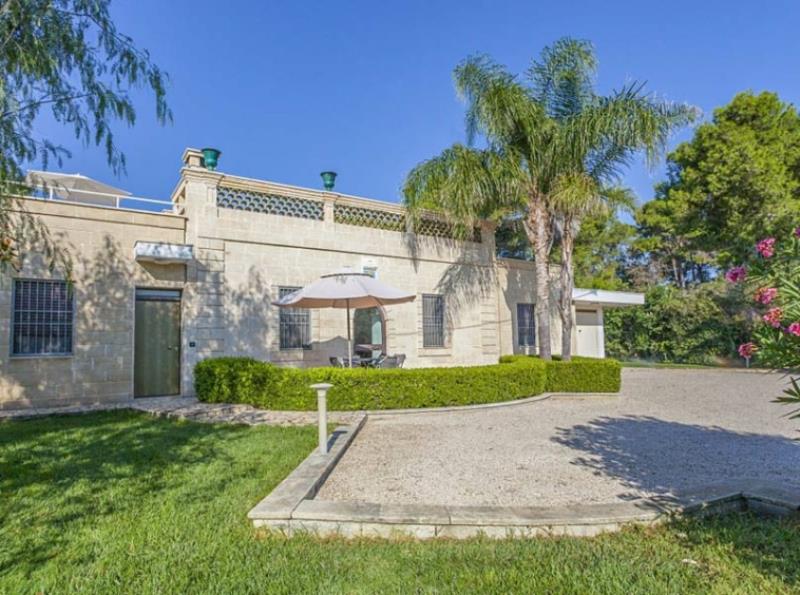Making sustainable choices on your viewing trip, will help preserve all that is beautiful about Italy for the future. By considering sustainability during your visits to Italy you will make a positive impact on the local economy, create jobs, preserve the cultural heritage and help prevent damage to the natural environment.
If you are looking to buy a holiday home for yourself or to rent out, you will be hoping that your future guests will understand the need to save energy and water, as they would at home. With increased energy costs across Europe we all need to act responsibly and do our bit towards sustainability.
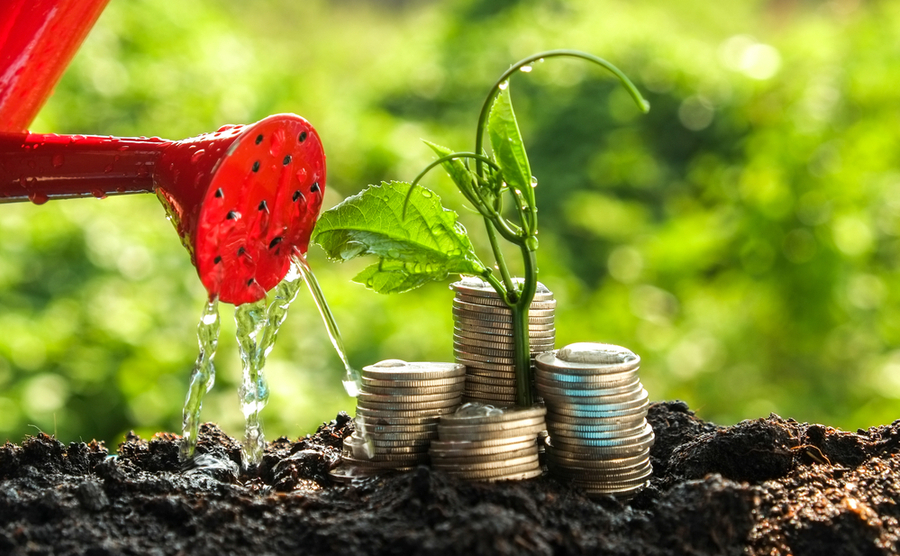
Acting and living sustainably could save you money
In the past, owners of holiday homes have been shocked by the number of guests that go out for the day and leave the air-con on and have lengthy showers. They dread the electric bill at the end of the summer. However, there are very positive signs that tourists are beginning to understand the need to be more eco-friendly.
This is demonstrated by a recent study by a leading holiday accommodation website (Source: Booking.com). They surveyed over 33,000 people, and discovered that 76% of world travellers would like to have more sustainable trips in this coming year. However, many also find that more sustainable travel options can cost more, forcing them to choose between sustainability and saving money.
Sustainable accommodation
Italy is expecting over 442 million overnight stays in tourist accommodation in 2023. (source: Demoskopika market-research institute) Just think of all the extra rubbish to be disposed of, the amount of water used, and the energy needed.
Eco-friendly rooms
When searching for accommodation online look for a filter option that selects only accommodation that attempts to make your stay as sustainable as possible. In Italy you will find some great farm stays, green hotels and eco-resorts. The best will have an eco-label certification, such as European ecolabel or Green key.
Try and stay in family run accommodation or a place that employs staff who are from the local area. Their local knowledge can be invaluable during your stay. They may even be able to recommend estate agents etc. Most importantly, it helps provide employment and young people are less likely to move away.
Find homes in Italy via our property portal.
In the shade
There are many apartments and houses to rent by private owners, that are in renovated properties, built with local stone and wood. By renovating an existing building and using locally sourced materials, these houses blend in beautifully with the natural environment. With the addition of covered verandas, window shutters and a pool, this type of property is designed to keep you cool in summer. Reducing your need for fans and air-conditioning.
No plastic here
Holiday accommodation providers may also adopt measures to reduce plastic use and recycle rubbish. Usually, you will find no single use plastic stirrers, straws, water bottles, cups, or cutlery. They will also provide guests with recycling bins.
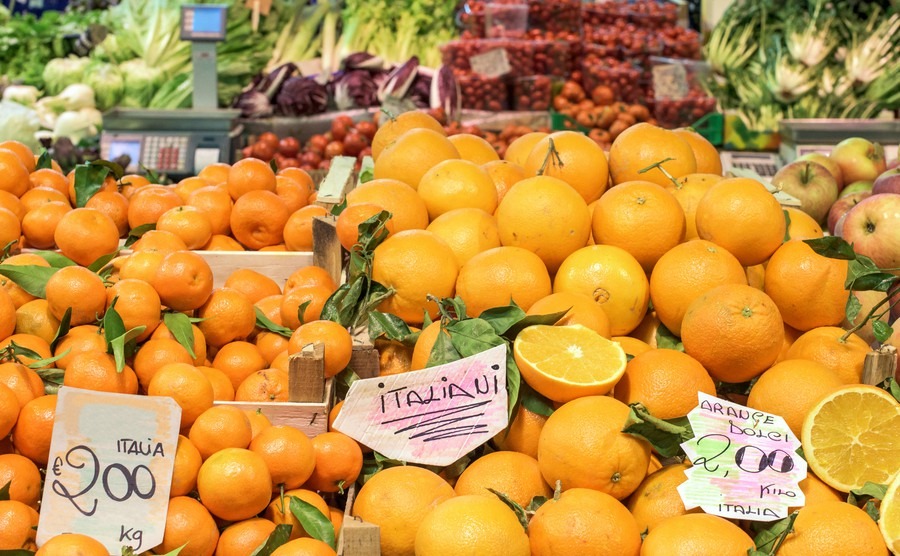
Buy local produce to reduce your carbon footprint
Local produce
Buying local produce not only helps the local economy, but also reduces your carbon footprint, because the food is being transported a shorter distance. In Italy there are still many family run, green grocers, bakers, butchers and farm shops that sell local produce. It is so lovely to be served by a real person, rather than a supermarket self-serve machine. If we want these small businesses to survive we need to use them.
If you stroll through the local markets, you might also discover some fantastic street food, which you would have otherwise missed out on. However, try not to be tempted to buy that big bag of grapes or round of cheese, if you aren’t going to be able to eat it all before you leave.
Also, look out for posters advertising local sagres and festivals, as these are where you will find the best seasonal produce and the products made from them. Make sure you eat at restaurants that source their food locally and use seasonal fruit and vegetables.
Cleaning
The energy and water used to clean bedding and towels can be considerable. Your hosts may want to use the washing machine at times when the electricity is at its cheapest, and dry them on a washing line. Ideally, they will use environmentally friendly cleaning products.
In many sustainable hotels, guests can choose how often the room is cleaned. Towels and bed linen might also be changed only when the guest feels it is really necessary. For B&Bs that get a lot of one night guests, it can work out unviable, and more and more are having to introduce a three night minimum stay.
Save energy
To save energy and water, the accommodation should have good insulation, such as double glazing and water efficient toilets and showers. The most energy efficient accommodation will use renewable energy sources for its electricity supply, such as solar panels.
As more travellers request sustainable accommodation, more property owners will make the changes necessary to safeguard the future ecosystem of their area. All these points are worth taking note of in preparation for welcoming guests to your own Italian home.
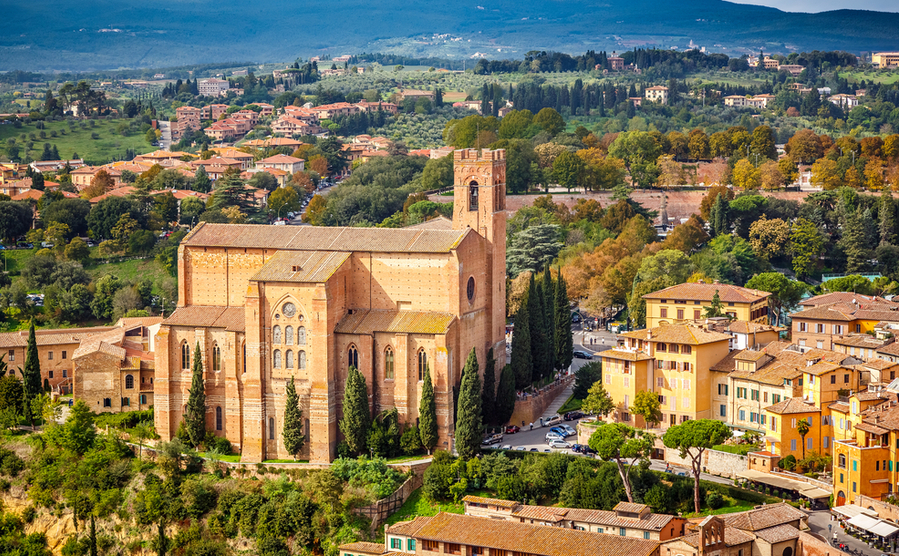
An aerial view over Sienna, Italy, which is abundant with greenery
A sustainable city
When considering which Italian city, town or village to buy a property in, there are certain things you can look out for that indicate how sustainable it is. The prefect example is Siena, which was the first in city in Italy to restrict traffic within the perimeter of the city walls. Siena has also become the first city of art in Italy that has been internationally recognized for sustainable tourism. The certification was awarded by the Global Sustainable Tourism Council (GSTC).
Surrounded by greenery Siena was naturally predisposed to sustainable tourism. Being listed as a UNESCO Heritage site also ensured its medieval buildings were being preserved. But it is the local community continuously striving to reach new goals that have resulted in the award.
The city has excellent air quality and lots of green spaces. Sustainable events are promoted, such as activities in support of the culinary tradition and typical products. Theatres are pledging to plant trees with every so many tickets sold, restaurants are being selective of the food they serve, and the city is being made more accessible to people with disabilities. Most impressively, Siena has been carbon neutral for 12 years. Greenhouse gas emissions are totally offset by CO2 absorption.
On your travels you will discover many other locations, that are achieving similar goals, but just don’t have the certificate. Historic centres are becoming more pedestrianised, walking and cycling are encouraged and more trees are being planted. Not only are trees good for the air we breath, they also create shaded streets to walk along and keep the sun off the buildings.
What can visitors do to help?
People on holiday want to relax and unwind. In some cases, responsible behaviour and common sense goes out the window. However, more people are now continuing with good habits followed at home. In the survey, 67% of people said they turn off the air conditioning in their holiday accommodation when they go out of the room (+29% compared to 2022).
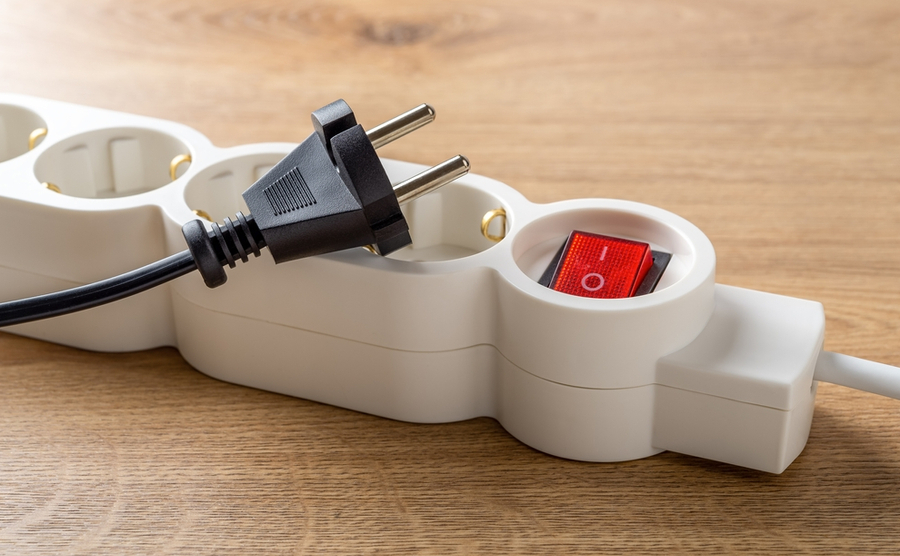
Unplug your electricals and turn them off when not in use
Turn it off
When visiting Italy, I recommend using fans or air conditioners only when you really need them. Otherwise, you will never adjust to the heat when you go out. When using air-cons close the room up and put the air-con on for just long enough to cool the room, then turn it off. Don’t leave it on all night and don’t let the cool air escape through the doors and windows.
It is always a good idea to unplug things when you go out too. This is partly to save energy, but also just in case there is an electrical surge that could damage your appliance. Occasionally, we can have sudden summer storms in Italy that can affect the electric.
Keep cool
Before switching on the fan try a wet flannel or a water sprayer. Put them in the fridge to keep them cool. A quick dip in the sea or pool is always refreshing and the heat is a good excuse to eat icecream. On evenings out, you will notice Italian women carrying a hand fan.
Reuse
60% of people surveyed use a towel more than once (+25%). Check what towels are supplied by the accommodation, so you don’t need to pack your own unnecessarily. Often, they will be gleaming white towels for shower use. If there is a a clothes-airer or balcony line available, use it to dry your towel and reuse it. Don’t leave them on the floor or draped over doors to get dirty.
It is well worth packing a couple of reusable shopping bags too, to use when you go shopping at the market, or souvenir shop. The ones that fold up small are great, as you can always have one handy.
Limit use of plastic
Don’t forget to take your reusable water bottle everywhere you go. In Italian cities you can often find taps with drinking water. The “What we waste dashboard” for Italy revealed that more than seven billion beverage containers escape recycling every year and get littered in the environment, or disposed of in incinerators or landfill. Sadly, you will see them on beaches and littering the beautiful Italian countryside. It is up to each individual to stop this.
When travelling, put some of your skincare products into refillable travel-size bottles or tubs. This will be more environmentally friendly and will also help you to save weight in your luggage. An even better option are bars of soap, and other toileteries that don’t come in plastic bottles.
If you are going to put some of that lovely Italian cheese or sliced meats in the fridge to making packed lunches, try to use reusable containers or beeswax clothes to wrap it in, rather than cling film or plastic bags.
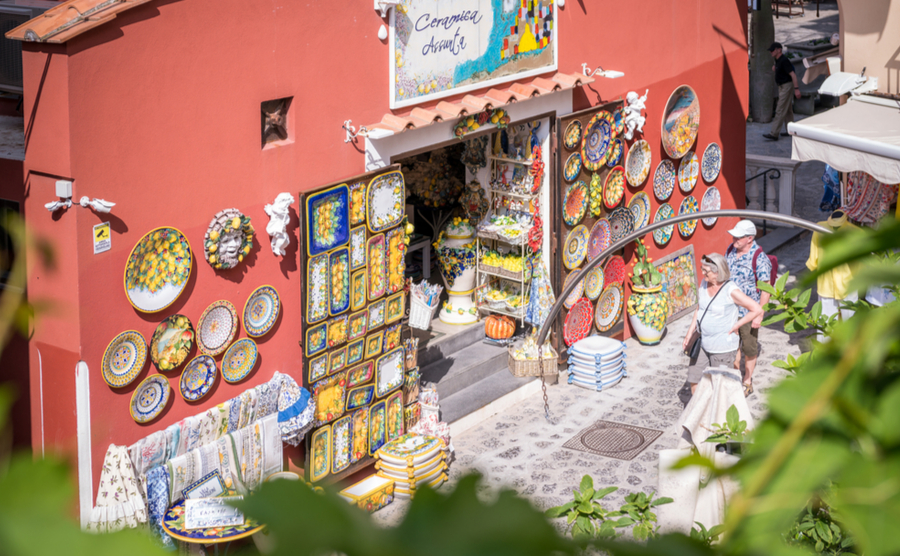
Buying locally made gifts from local businesses boosts tourism
Souvenirs
It’s best to buy local handmade products. Ask the seller questions to find out more about how the souvenirs have been produced and what materials had been used in the production.
Think practically when buying souvenirs. Whether it’s hand-painted ceramic crockery or salad spoons made from olive wood, handmade useful objects will be more valuable long term and they will remind you of your travels every time you use them.
Typical traditional culinary souvenirs, for example olive oils or wine, make great sustainable souvenirs. At the airport there may be liquid restrictions and on certain types of produce, but you can buy lots of typical products at the airport shop.
Authentic experiences
Of the travellers surveyed, 75% were looking for authentic experiences that are representative of the local culture, but 40% don’t know how or where to find them. In Italy there are opportunities to go on wine or culinary tours with tastings. You may also find pasta making and cooking classes.
To experience an authentic cultural event, try and attend a local “Festa” for the saint of the town. As well as the religious procession you might see a brass band, flag wavers, folk music, traditional dancers and local food specialities.
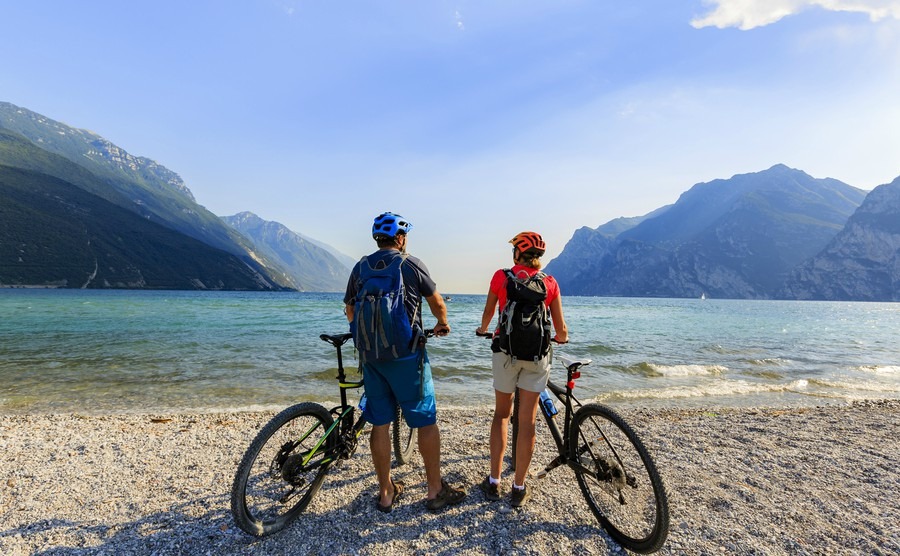
Cycling is a great way to discover local areas on a viewing trip
Sustainable Transport
When it comes to transport, 43% of people try to organize their visits so that they can walk, cycle or take public transport as much as possible. Ideally you would walk or cycle everywhere, and Italian cities do encourage this with pedestrianised streets and cycle lanes. Many also make it easy to rent a bike or electric car.
However, when viewing properties and looking at potential areas to buy in, a car is generally more convenient. Although, the fuel costs alone may make you think twice about buying that property miles from anywhere.
It is also getting easier to travel with your own bike. So why not bring your bike on the plane. Bari and Brindisi airports have even introduced an assembly and disassembly point for bicycles with storage point. Most Italian airports have either train or bus links into the nearest town.
Trains in Italy (Trenitalia) offer the opportunity to take a closed-up bike of less than 80x110x45cm in size on their trains for free. Also, check out what offers they have on train fares. For example, at time of writing you could get a 3-day train pass for 29 euros. Some train stations even link up with suggested cycle routes.
If you enjoy train journey’s, and are travelling from London, you could even travel by train all the way from London St-Pancras to Milan, with just one change at Paris. The journey can take as little as 10 hours 23 minutes.
If we all try to be as eco-friendly as humanly possible, we have a chance of preserving all that we love about Italy. The stunning green landscapes, the friendly communities, the fresh local cuisine, the historic buildings and the lovely climate.


